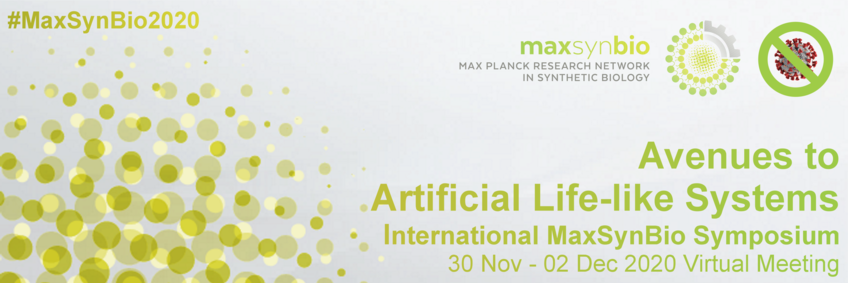
#33 - Microscopic polysaccharide hydrogels loaded in microreactors to perform enzymatic cascades towards polyketide synthesis
Carola Graf (Leibniz Institute of Polymer Research Dresden)
Tuesday, 01 Dec 21:15 - 22:00 CET
Access to the BigBlueButton rooom for this Mini Talk via the lists for Monday and Tuesday.
Please make yourself familiar with BigBlueButton before you join the Mini Talk - read the instructions.
Abstract
Title: Microscopic polysaccharide hydrogels loaded in microreactors to perform enzymatic cascades towards polyketide synthesis
Author(s): Carola Grafa, Nicolas Haucka, Max J. Männela, Tony Köhlera, Anika Kaufmanna, Sandra Höfgenb, Vito Valianteb, Julian Thielea
Affiliation(s): aLeibniz Research Group - Polymer Micro(bio)reactors, Leibniz Institute of Polymer Research Dresden, Dresden, Germany; bLeibniz Research Group - Biobricks of Microbial Natural Product Syntheses – Leibniz Institute for Natural Product Research and Infection Biology – Hans Knöll Institute, Jena, Germany
Abstract: Secondary metabolites, such as structurally complex polyketides, can be assembled by consecutive steps of decarboxylative Claisen condensations. Enzymes catalyzing these condensation reactions, known as polyketide synthases, are commonly consuming coenzyme A (CoA)-activated acyl groups like acetyl-CoA and malonyl-CoA, which can be formed by acetyl-CoA synthetase and malonyl-CoA synthetase (MatB), respectively. To support the cell-free synthesis of non-natural polyketides, which may serve as novel approach in drug development, we utilize droplet microfluidics to prepare microscopic polymer hydrogels with tailored size and porosity. These are composed of furan-functionalized hyaluronic acid and poly(ethylene glycol) dimaleimide which are cross-linked inside monodisperse aqueous droplets via Diels-Alder cycloaddition. The integration of nitrilotriacetic acid moieties loaded with nickel ions into the gel particles allows for immobilizing His-tagged enzymes via metal-chelate complex formation. The enzymatic cascade which we investigate consists of MatB providing malonyl-CoA, 4-coumarate-CoA ligase providing 4-coumaroyl-CoA and naringenin-chalcone synthase which assemble malonyl-CoA and 4-coumaroyl-CoA to naringenin chalcone. The enzymes are expressed as fluorescent fusion proteins. That way, the immobilization efficiency and distribution within the microscopic polymer hydrogels are studied via fluorescence intensity. Microreactors are further used to study the enzymatic cascade in a defined environment under continuous flow. Hence, reaction conditions (e.g., temperature) as well as perfect mixing ratio of the immobilized enzymes and an optimal flow of the substrates through the microreactor are investigated.